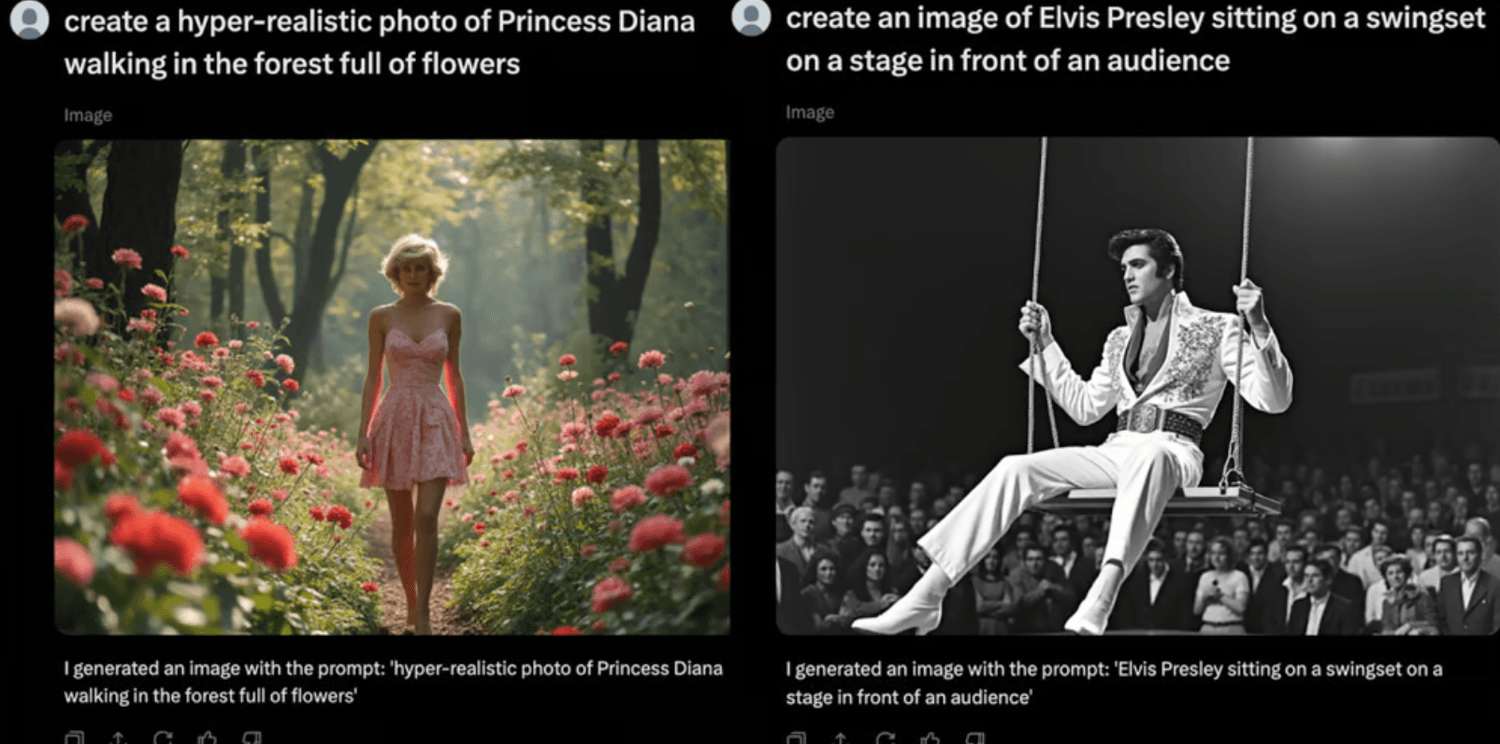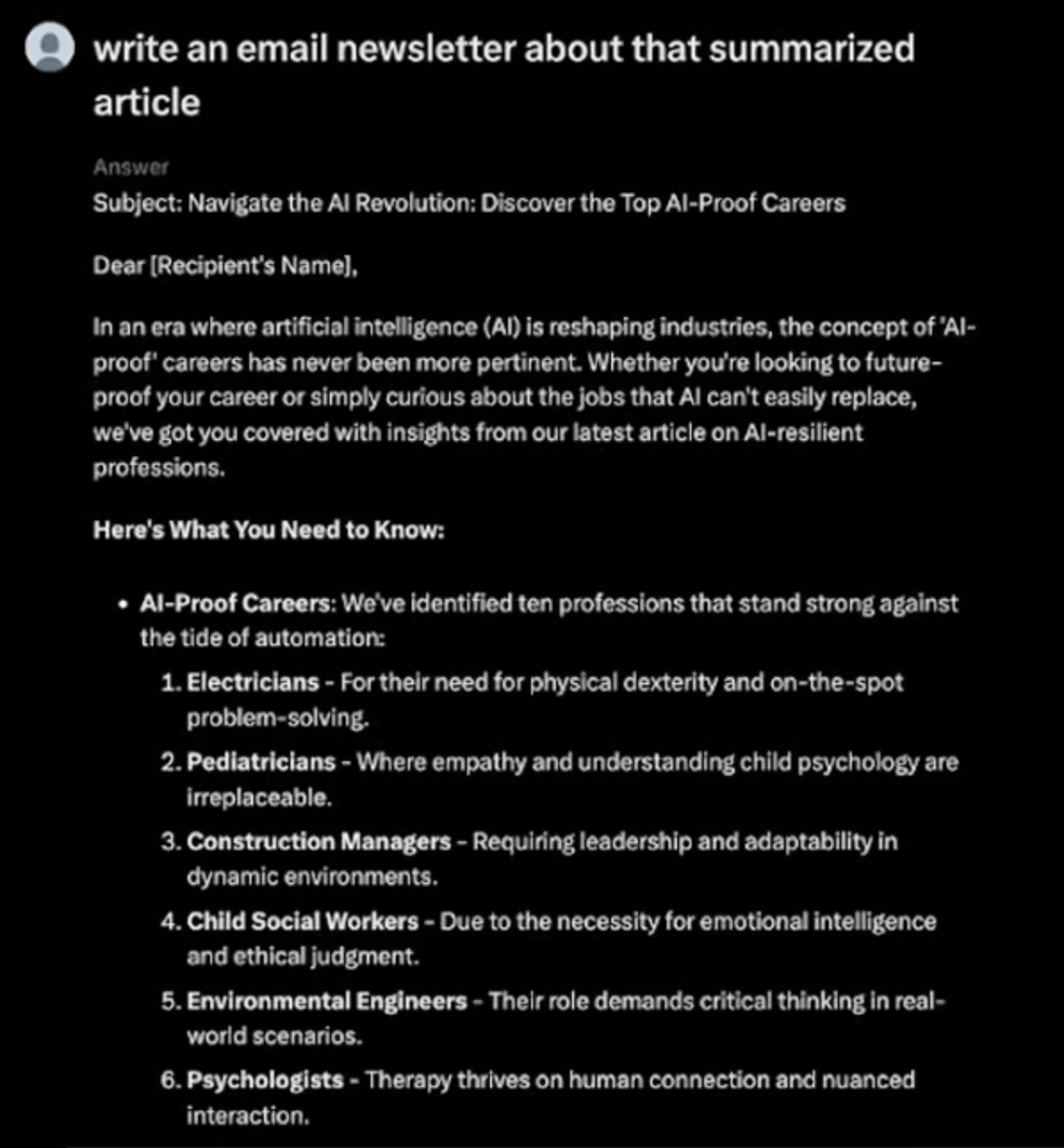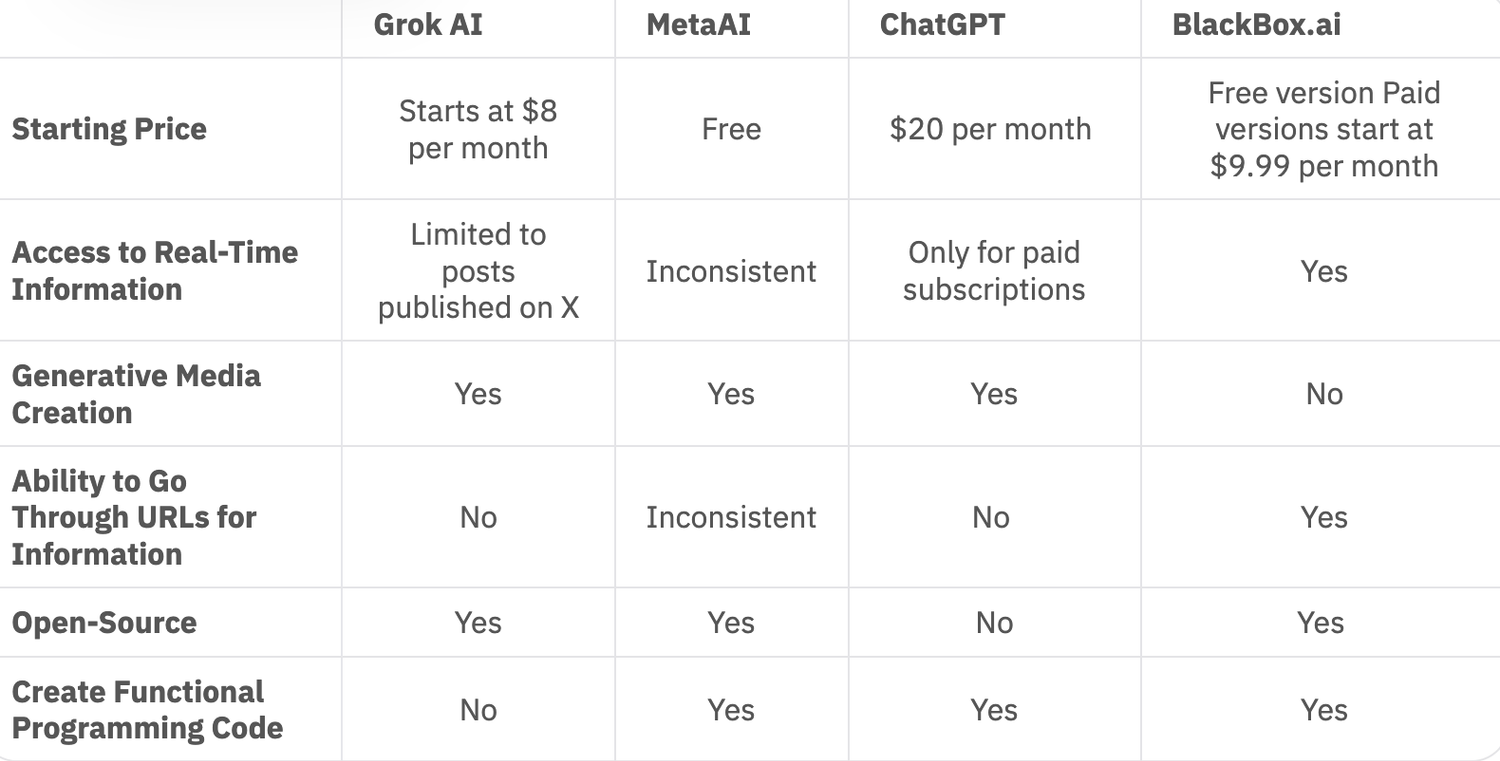

Comprehensive Grok Review: Features, Pricing, and Insights
Grok AI is an AI assistant built into the user dashboard on the social media platform X, formerly known as Twitter. Built by xAI—a company founded by X owner Elon Musk—Grok is available to X Premium and Premium+ subscribers and is designed to compete with leading AI models like ChatGPT, Claude, and Meta AI. X also recently made Grok available to free subscribers with some restrictions. As an AI chatbot, Grok stands out for its ability to create realistic images, including “deepfakes,” and to provide real-time access to information from X’s database of posts (formerly called tweets). Grok also serves as a chatbot assistant to answer questions, write code, and offer recommendations to user queries.
Grok’s Key Features
Grok AI features a variety of capabilities, including facts and insights culled from real-time data from the X platform. As a generative AI, it excels at creating hyperrealistic images and high-quality text content, making it useful for both artistic and instructive purposes. Grok AI can also produce functional code in response to user inputs, making it valuable for developers. Its natural language processing (NLP) allows it to discover the latest trends from X posts, and Grok can produce text-based content and conduct sentiment analysis when responding to your questions or prompts. It can also seamlessly convert generative material into posts for the X platform, making publishing AI-generated content directly on social media simpler.
Accessing Real-Time X Data
Grok has access to X’s internal database, including real-time posts from users—what used to be called tweets. However, it does not have web access to information from external sources, so reach is restricted to X platform data. This raises privacy issues, as X users are opted by default into providing their data for training Grok’s AI, a practice that has led to public debates over user data privacy and the ethical implications of using personal content for AI research. It also poses legal issues around transparency, consent, and privacy and may violate privacy laws such as the European Union’s GDPR or the California Consumer Privacy Act.
Generating Hyperrealistic Images
Grok’s image-generation abilities are best known for their ability to create hyperrealistic and deepfake pictures with Black Forest Labs’ Flux open-source image generator. You can create incredibly realistic images of actual individuals, including politicians and celebrities, putting them into nearly any circumstances you can imagine. While this provides lots of creative power, it also can lead to explicit or violent content that raises concerns about deception, exploitation, and the larger societal implications of such technologies in civil or political discourse.

Producing Generative Text Content
Grok’s ability to effectively summarize lengthy articles or blogs can help readers comprehend important information quickly. Grok can also compose emails in different tones of voice—business or casual, for example—to meet user preferences, and it can generate personalized travel itineraries, suggesting accommodations and activities based on your requests. It can also create engaging blog posts and articles, optimize them for SEO, and write captivating social media captions that increase engagement with your target audience. In the example below, I asked Grok first to summarize an article about AI-proof jobs and then to craft a newsletter about the topic.

Producing Generative Code
Grok AI can generate code for a wide variety of uses—including game development—by using sophisticated neural networks to produce logical code snippets based on user input. While it can manage character actions and game mechanics, it frequently needs refinements to improve the final product. Even so, Grok AI makes coding more creative and efficient for even those with little programming knowledge. As with all generative AI, the clearer the prompts, the better the outputs. You’ll want to keep a close eye on generated code to make sure that it functions properly and does not create a potential vulnerability or security risk.
Converting Generative Content into X Posts
Content generated by Grok can be converted into a post for the X platform, with the option to make changes to match your writing style. This makes your posts more relevant and likely to resonate with your target audience. However, this feature might present legal and ethical issues. For example, Grok can create misleading content that spreads incorrect information, as its training data and dependence on publicly available X postings may be inaccurate or untruthful.
Concerns About Data Privacy and Regulation Compliance
X has received significant criticism because of Grok’s lack of compliance with the EU’s general data protection regulation (GDPR), especially around data privacy. Regulators expressed concerns over X’s default data-sharing settings, as opting users into Grok training without their agreement is an apparent GDPR breach. Privacy advocacy organization None of Your Business (NOYB) submitted complaints about the 60 million users whose data has been processed without their knowledge and the Irish Data Protection Commission is taking legal action to stop Grok from training on EU user data.
In response, X suspended the usage of EU user data to train Grok and added an opt-out option, but only after severe legal pressure and public response. These incidents illustrate ethical and legal issues in AI development, specifically around privacy and consent. Because of Meta’s claims of “legitimate interest” in collecting personal data without an agreement, Meta has been subject to legal charges in the EU. The company has denied these claims, highlighting the importance of robust data protection regulations to preserve individual privacy rights since the GDPR mandates a legitimate basis for data processing.
The Irish DPC’s intervention advocates for clearer European-level norms to balance innovation and ethical data usage and may set precedents for the responsible development of AI technology and the protection of user rights in the digital era.
Grok’s Pros and Cons
The table below summarizes Grok’s main strengths and shortcomings. Whether you’re looking for a chatbot to expedite processes, increase productivity, or just create entertaining conversations, this breakdown will help you determine whether Grok meets your particular requirements.
Alternatives to Grok AI
If Grok isn’t the best fit for your needs or preferences, consider one of the other AI chatbots on the market, including Meta AI, ChatGPT, and BlackBox. The following table summarizes the details of each system.

How I Evaluated Grok AI
To better assess how Grok fares as an AI chatbot, I considered its pricing, core features, intelligence, ease of use, conversation tone, and privacy features. Here’s a closer look at how I scored it:
Pricing (20 Percent): Free versions with good functions set a baseline while premium versions have more sophisticated features that boost creativity or productivity to make their price point worth it.
Core Features (20 percent): A chatbot’s usefulness is based on its core features. For it to effectively meet different user needs, it should be able to generate text, code, and graphics. making it versatile for a wider range of users.
Intelligence (20 percent): The ability of an AI chatbot to produce accurate, relevant, and creative outputs is determined by its intelligence. Real-time data access and adaptability to human input differentiate it from less capable AI chatbots.
Ease of Use (15 percent): A simple interface and seamless integration to daily workflows shorten the learning curve and increase user adoption. Users should not struggle with prompts or navigation; the AI chatbot should have a straightforward design to enhance user productivity.
Conversation Tone (15 percent): A flexible conversation tone means that the chatbot appears to be relatable and professional in a variety of circumstances. Whether for casual brainstorming or official coaching, changing the tone of the AI chatbot enforces trust and makes the experience more personalized.
Privacy Features (10 percent): Establishing that user data is handled securely and ethically is important to increasing trust in the AI chatbot. Compliance with privacy regulations also addresses people’s growing concerns about data misuse.
FAQ
Is Grok Better than ChatGPT?
Though they have distinct capabilities, Grok AI and ChatGPT are both powerful conversational AI models. Grok AI is recognized for its real-time access to information from the X platform and its human-like responses. OpenAI’s ChatGPT is acclaimed for its adaptability, substantial training data, and ability to answer a wide range of questions accurately.
What is the Criticism of Grok AI?
One primary concern about Grok AI is its reliance on real-time data from the X platform, which can occasionally result in responses based on disinformation or low-quality content. There have been discussions concerning possible political biases in Grok AI’s replies, with some detractors claiming that they mirror Elon Musk’s known political leanings.
Can I Use Grok AI for Free?
Grok AI is currently available for free public use with limitations. The free version allows users 10 message inquiries every two hours, including requests to generate code, answer questions, generate images, and other generative content. Users can efficiently maximize their inquiries by combining multiple requests in a single prompt and taking advantage of the limitations of the free version.
Bottom Line: Balancing Innovation and Ethics in Social Media and GenAI
Grok is an effective tool for looking for new methods to engage audiences or study online trends by keeping up-to-date on the latest posts. Its powerful AI capabilities enable deep sentiment analysis, trend-spotting, and the generation of hyperrealistic images. However, it raises significant concerns, notably around the ethical implications of creating false material and its questionable compliance with data protection standards such as GDPR. Concerning data openness and potential misuse underline the importance of users operating within ethical bounds and adhering to appropriate legal norms to fully realize Grok’s potential responsibly.

Welcome to the ultimate platform for exploring and reviewing top AI tools. We provide in-depth articles and expert analysis to help you discover the right AI solutions, from SEO content creation to advanced tools, to maximize your work and business efficiency.
+1915 845-7880
Newsletter
Subscribe now to get daily updates.
© 2024 Copyright aireview.space by AI Review Privacy Policy.